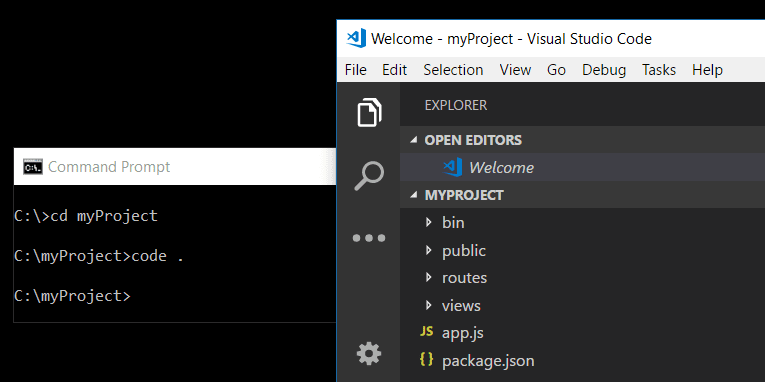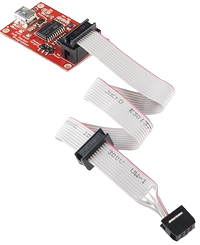
- #OPEN C PROGRAM IN TERMINAL FOR MAC MAC OS#
- #OPEN C PROGRAM IN TERMINAL FOR MAC INSTALL#
- #OPEN C PROGRAM IN TERMINAL FOR MAC GENERATOR#
- #OPEN C PROGRAM IN TERMINAL FOR MAC UPDATE#
- #OPEN C PROGRAM IN TERMINAL FOR MAC FULL#
If you are coming from another Unix environment, and you are used to xterms, you may prefer to download and use iTerm, an OS X native terminal application that behaves similarly to an xterm ( ).
#OPEN C PROGRAM IN TERMINAL FOR MAC MAC OS#
You can use the Terminal app ( /Applications/Utilities/Terminal) that comes with Mac OS X. To compile from the command line, you will need: You can find more information on Clang, LLDB, and the LLVM project on the LLVM website. The LLVM project also includes LLDB, a new debugger. Apple has announced that llvm-gcc-4.2 is “frozen” (no new features or bug fixes) as of Xcode 4.4 and will be removed in a future version of Xcode.

Certain newer features of Objective-C, such as automatic reference counting (ARC), are available only by using the Clang compiler.Ĭlang is the default compiler in the current version of Xcode.Clang provides much more informative error messages when you make a mistake.The Clang compiler has many advantages over llvm-gcc-4.2: Note that Apple refers to the Clang compiler as “LLVM Compiler N,” where N is the current version number-4.0 as of Xcode 4.4.
#OPEN C PROGRAM IN TERMINAL FOR MAC GENERATOR#
The current compiler is the Clang compiler, which combines a new unified parser for C, Objective C, C++, and Objective C++ with the LLVM code generator and optimizer. In the first part of the transition Apple used a compiler called llvm-gcc-4.2 that combined the front end from gcc 4.2 with the LLVM code generator and optimizer. LLVM is not a single compiler it is a set of modules that can be used to build compilers, debuggers, and related tools. However, in the past several years they have transitioned to using compilers from the open-source LLVM (Low Level Virtual Machine) project.
#OPEN C PROGRAM IN TERMINAL FOR MAC INSTALL#
You can install the Universal build, which includes both Intel and Apple Silicon builds, or one of the platform specific builds.Historically, Apple has used the open-source GNU compiler, gcc, for building iOS and OS X programs.

Yes, VS Code supports macOS ARM64 builds that can run on Macs with the Apple M1 chip. Follow the steps in this issue for resolution.
#OPEN C PROGRAM IN TERMINAL FOR MAC UPDATE#
If VS Code doesn't update once it restarts, it might be set under quarantine by macOS. It is fine to choose Don't Allow since VS Code does not need access to those folders. " This is due to the new privacy protections in Mojave discussed above.
#OPEN C PROGRAM IN TERMINAL FOR MAC FULL#
Out of the box VS Code adds actions to navigate in editor history as well as the full Debug tool bar to control the debugger on your Touch Bar:Īfter upgrading to macOS Mojave version, you may see dialogs saying "Visual Studio Code would like to access your. Note: Since zsh became the default shell in macOS Catalina, run the following commands to add VS Code to your path: cat > ~/.zprofile # Add Visual Studio Code (code) export PATH="\$PATH:/Applications/Visual Studio Code.app/Contents/Resources/app/bin" EOF Touch Bar support Remove the leading slash if you want to run the export command directly in a terminal. Note: The leading slash \ is required to prevent $PATH from expanding during the concatenation. To do so run the following commands: cat > ~/.bash_profile # Add Visual Studio Code (code) export PATH="\$PATH:/Applications/Visual Studio Code.app/Contents/Resources/app/bin" EOF Instead of running the command above, you can manually add VS Code to your path, bash_profile (or equivalent) from an early VS Code version, remove it and replace it by executing the Shell Command: Install 'code' command in PATH command. Note: If you still have the old code alias in your. ' in any folder to start editing files in that folder.




 0 kommentar(er)
0 kommentar(er)
